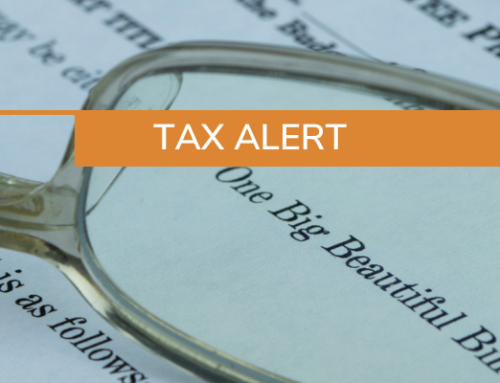By Charles Dean Smith, Jr. CPA
Keep reading to understand:
The IRS has launched the Employee Retention Credit Voluntary Disclosure Program (ERC-VDP) to support businesses that were misled by unscrupulous ERC promoters during the COVID-19 pandemic. Many businesses were taken advantage of by these promoters, who often presented overly optimistic or inaccurate interpretations of eligibility for the ERC, leading to inappropriate claims. The ERC-VDP program, with a deadline of March 22, 2024, provides an opportunity for employers to rectify their ERC claims and avoid standard penalties and interest.
Background
Introduced in 2020 as a crucial part of the COVID-19 relief efforts, the Employee Retention Credit (ERC) quickly faced numerous obstacles. Legislative changes and diverse interpretations of eligibility led to confusion among taxpayers, resulting in a significant number of fraudulent claims. In response, the IRS put a temporary hold on new ERC filings starting September 14, 2023, and rolled out a claim withdrawal program on October 19, 2023.
Building on these measures, the IRS introduced the Employee Retention Credit Voluntary Disclosure Program on December 21, 2023. This program is specifically designed to help employers who were misled into receiving ERC refunds due to the aggressive and often deceptive strategies of third-party promoters. These promoters often charged significant fees. Recognizing these challenges, the program offers a lenient repayment option – allowing businesses to return only 80% of the erroneous refund, with penalties and interest forgiven.
This corrective measure was underscored by findings from the Taxpayer Advocate Service (TAS), which revealed that the IRS processed over 3.5 million ERC claims, disbursing approximately $230 billion. This figure vastly exceeded the initial $85 billion estimate, highlighting the program’s extensive reach and underscoring the critical need for the ERC-VDP to facilitate adjustments.
Eligibility and Benefits of ERC-VDP
Eligible ERC-VDP participants include businesses, tax-exempt organizations, and government entities that acknowledge receiving unqualified ERC refunds. Entities under criminal investigation or those already in contact with the IRS over ERC noncompliance cannot participate. Notably, the forgiven 20% and any waived penalties and interest are not considered taxable income.
Key benefits of the program include:
- Reduced Repayment: Participants are required to repay only 80% of the ERC received, without interest or penalties. Additionally, any interest income earned on the ERC refund is not required to be repaid.
- No Amended Returns Required: Participants don’t need to adjust previous income tax returns for wage deductions claimed under the ERC.
- Penalty and Interest Waiver: The IRS will not impose penalties or interest for the ERC amounts if repaid according to the program terms.
- Closure: Accepted organizations will sign a closing agreement, providing a clear end to their ERC issues.
Application Process
Applications must be submitted via Form 15434 by March 22, 2024. If payroll is outsourced to a third party using their EIN, that entity must file on the business’s behalf. For those unable to pay in full, installment agreements are available. Applications must include detailed taxpayer information, all relevant ERC claims, and information about any advisors or preparers involved in the original claim.
It’s important to note that if an application is rejected, there is no known opportunity for review or appeal. Additionally, participation in the ERC-VDP does not shield taxpayers from future IRS investigations into criminal activities nor does it offer immunity from prosecution.
Addressing Questionable Claims
Withdrawing an ERC claim avoids refunds but also protects against audits and penalties if found ineligible later. The IRS retains the right to investigate intentional fraud, with an extended deadline until April 15, 2027, for auditing certain ERC claims, highlighting the IRS’s commitment to ensuring claim accuracy. The IRS is focusing on the “suspicious seven” indicators of potential fraud:
- Too many quarters being claimed: It’s rare for businesses to qualify for ERC across all available quarters. This practice often signals a misunderstanding of the eligibility criteria or that a business has fallen victim to an aggressive marketing scam.
- Government orders that don’t qualify: Only specific government orders related to COVID-19 that directly impacted business operations justify ERC claims. Most orders from the Occupational Safety and Health Administration (OSHA) do not meet the criteria for specific and enforceable governmental orders necessary for ERC eligibility. The misuse of OSHA communications as a basis for qualification has been a significant issue, as highlighted by the IRS, which clarifies that reliance on such guidance from OSHA generally does not constitute valid eligibility for the credit.
- Too many employees and wrong calculations: Employers must adhere to the specific eligibility rules for qualified wages, which vary by tax period. Overclaiming by applying the same credit amount across different periods or employees is a red flag.
- Business citing supply chain issues: Qualifying for ERC due to supply chain issues is exceptionally rare and often misunderstood. Claims based solely on supply disruptions without meeting strict criteria are suspect.
- Business claiming ERC for too much of a tax period: Claiming ERC for entire calendar quarters when only a portion meets the eligibility criteria indicates a misapplication of the rules.
- Business didn’t pay wages or didn’t exist during eligibility period: ERC claims from businesses without a record of paid wages during the claim period or those that did not exist at the time are clear indicators of erroneous claims.
- Promoter says there’s nothing to lose: Promoters who assure businesses they “have nothing to lose” by claiming ERC often do not have the businesses’ best interests at heart. Such claims carry significant risks of audit, penalties, and repayment obligations.
Taking Action
With the March 22 filing deadline imminent and the IRS sharpening its focus on compliance, it’s crucial for businesses to reassess their ERC claims. Engaging a tax professional can streamline any necessary corrections, ensuring compliance and peace of mind.
For further details on navigating the ERC-VDP, contact Tax Partner Charles Dean Smith, Jr.





